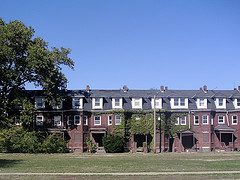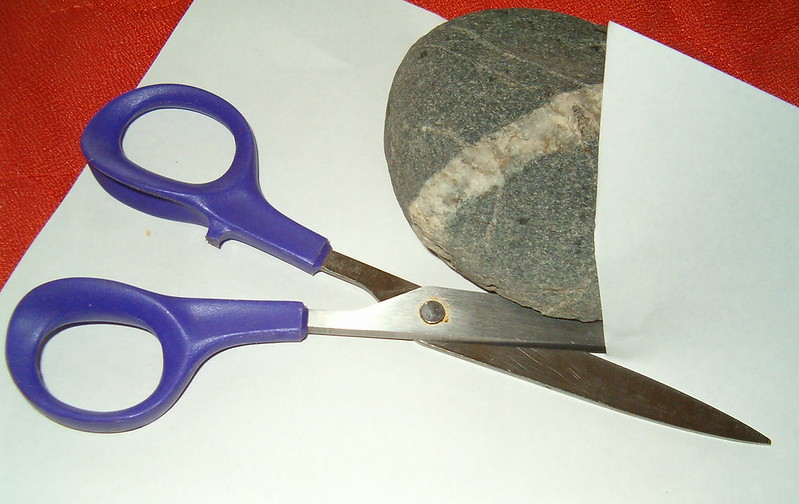
Photo by gwdexter via Creative Commons
Having lived in D.C. for nearly a quarter century now, I am still flabbergasted to see white people pushing baby carriages on streets in my old neighborhood on H Street in Northeast. Now a national example of successful “commercial district revitalization,” in the late 1980s the area was collateral damage in the crack epidemic and stages for murder, violence, and despair.
Even in some of D.C.’s worst times we’ve had the advantage of operating in a comparatively strong metropolitan real estate market so that there was some demand, especially for historic residential building stock, even if this demand was mostly generated by “urban pioneers” willing to buck the trends that then favored suburban living choices.
Probably the biggest lesson I have learned is that your opportunities are shaped by whether or not your market is “strong” or “weak,” that is, “is the metropolitan area adding population?” If you aren’t adding population to your region, attractive new housing in the suburbs typically comes at the expense of already existing housing in the center city and inner ring suburbs of your region, setting the stage for disinvestment and blight.
At the same time, neighborhoods within metropolitan areas compete against each other as well. Even in weak markets, stable urban neighborhoods can be popular places to live with positive property values, and we can work with historic preservation, commercial district revitalization, and other strategies to reposition places so that more neighborhoods can become or remain competitive vis-a-vis other compelling neighborhoods. The National Trust Main Street Center of the National Trust for Historic Preservation is a great resource for commercial district revitalization programs, and the National Trust for Historic Preservation has many resources on historic preservation that are generalizable to neighborhood revitalization as well.
The second biggest lesson I’ve learned is that given limited resources, we need to ensure that every project we do and every dollar we spend accomplishes multiple objectives and works to achieve multiple goals. Housing projects need to support commercial district development and retail projects need to help strengthen residential areas. Projects should aim to achieve a mix of uses while remaining context-sensitive and connecting to the neighborhood beyond the lot lines.
This goes for public projects too. Do we need separate senior centers or can we incorporate those projects into community centers and recreation centers? How do we reinforce the role of neighborhood schools as community anchors and building blocks and forces for revitalization? How do we provide programming in our parks and libraries and recreation centers in ways that strengthen our community’s ability to be resilient and strong?
The third lesson I’ve learned is that capacity-building activities for citizens and community organizations are essential. Sure, in this field we are all familiar with NeighborWorks and what a great resource it is. Our challenge is to develop similar kinds of programming and support institutions at the local level. Without building community knowledge and capacity, we are going to continue to run in place instead of moving forward. (And how can we leverage national conferences, when they occur in our communities, to support local capacity building and development while they are here?)
Fourth and finally, I’ve learned that dollar for dollar, investing in transit can be the most transformational of all public investments. Of course, this is dependent on having a transit network rather than just a line or two. Witnessing the impact of the creation of the “infill” New York Avenue Metro Station on the H Street NE neighborhood in Washington, D.C., converted me into a transportation planner, because of how adding this transit connection made living north of H Street a viable option for people with choices.
Being within a short walk of the subway station drove new demand to an area suffering from lack of demand and disinvestment, and was enough to help the community turn the corner—of course not without anguish, especially over concerns about displacement—and get vacant houses rehabilitated and reoccupied, commercial buildings restored and occupied, and larger tracts of land near the transit station are being developed as multiunit housing.
—
I am pleased to be asked to join the group of bloggers contributing to Rooflines on urban revitalization and housing issues. I have been actively involved in neighborhood and commercial district revitalization in Washington, D.C., for about 12 years, and have lived here for 12 years beyond that, so I am very much familiar with the peaks and valleys of center city revitalization—the lack of funds, dubious projects, desperation for any type of business activity, the tension over downtown vs. neighborhood development, the need to develop capacity within community organizations and civil society, the tension between staff-driven and community-driven organizations, the difficulties of making hard choices, and even, success.
I blog on these issues—neighborhood revitalization, good government, urban planning, civic engagement and participatory democracy, transportation planning, and more—at Rebuilding Place in the Urban Space.
While many of my entries will be based on my experiences living and acting in Washington, I aim to write entries that draw lessons from these experiences so that they are generalizable and applicable elsewhere, and because of the topics and places that I cover (not just Washington), my blog is considered one with national reach; it is not strictly local. My line about this is that while all places are unique, most places aren’t exceptional in that they can’t be compared and contrasted. We learn and develop better practice from such comparisons.




Comments